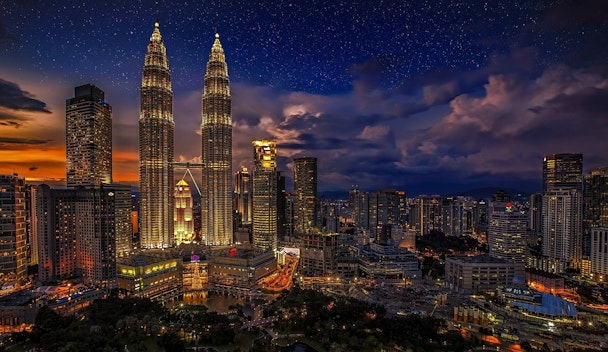State of the Nation: Overcoming Malaysia's Great Resignation through Talent Density
In the latest State of the Nation, Media.Monks Malaysia's managing director Munas van Boonstra explores the importance of talent density during the Great Resignation season.

/ Image by Walkerssk from Pixabay
We have been hearing and reading a lot about the Great Resignation. A 2021 report polling 1,000 Malaysian professionals showed that 61% of employees planned to find a new job sometime in 2022, of which the majority of these job-leavers were from the 35 and under demographic. Often, I wonder why some teams or organisations have the talent pool, and some simply don’t.

In Malaysia, it seems to be more predominant during the first quarter of the year as employees wait for their annual bonuses, promotions and increments to happen during the previous year-end or during the Chinese New Year period. Therefore, talent retention and talent attraction are of utmost importance. While it is tempting to hire quickly to ensure gaps are filled, emphasis should be made on quality and the right hire for the role, as it will benefit the company and teams in the long term.
Advertisement
Now, I have heard of Calorie Density, but thanks to my reading of No Rules Rules: Netflix and Culture of Reinvention by Erin Meyer (professor of INSEAD business school) and Reed Hastings (co-founder and CEO of Netflix), I learned a new term: Talent Density! An organisations with really dense talent is an organisation that everyone wants to work for – it’s the natural magnet and attraction.
Talent Density means a workplace composed of exceptional Talent. The more exceptional talent you have top to bottom versus the number of adequate talents, the higher your talent density. Here’s an example ratio for a workplace of 100 employees.
60 Exceptional Talent : 40 Adequate Talent = High Talent Density
20 Exceptional Talent : 80 Adequate Talent = Low Talent Density
At Netflix, they prefer hiring one exceptional/stunning talent who is equivalent to doing the work of three or more rather than hiring three adequate talents. Hence, quality over quantity of resources.
Advertisement
You might be thinking, oh wow… my resource overheads will hit the roof and bust the budgets! But wait, remember how one exceptional talent is equivalent to doing more than an adequate talent? High performers thrive in a high-talent-density environment. High performers aren’t annoyed or demotivated by seeing adequate talents getting promotions or cleaning up someone else’s work (double work) or frustrated at the slow pace of getting things done.
Employees will learn more from one another and teams accomplish more at a faster rate. In the advertising industry, these are award-winning and profitable teams as they would spend less time on “nutting out a winning brief” versus a team that spends so much more time and resources to accomplish the same win.
Exceptional and adequate talents with exceptional potential get highly motivated and naturally pace each other to achieve more and lead the organisation toward more success. There will be a natural rubbing-off effect of the exceptional talent onto the adequate talents as well. This high talent density culture fosters a contagious influence on other talents in wanting to do their best, elevating the organisations’ standards and motivational levels. Studies have shown that contagious behaviour in the workplace has a massive impact on talent retention and attraction.
Suggested newsletters for you
Yes, creating a workplace environment with a cool office, gym memberships, free meals, hybrid work policies, Diversity-Equality-Inclusivity (DEI), and Environmental-Social-Governance (ESG) do play a part in attracting and retaining clients. However, having all the above with low talent density will not keep or attract better talent. It’s about the motivation of being surrounded by other people who are talented and collaborative – people who can help you improve and achieve more. When everyone is excellent, performance goes sky-high, and employees will learn and motivate one another.
Talent acquisition managers, heads of organisations and teams should look at themselves as music producers! Start looking for your rockstars (these exceptional talents)! Or think of yourself as a football coach and how you need to get as many exceptional players for your team of 11. A football team with only one ultimate superstar striker versus a team of exceptional talents and adequate talents with potential, the winners of leagues tend to be a High Talent Density team instead of a team with only the top striker of all time. The top striker can’t perform as well when in such an environment. I have had the honour of working in high and low-talent density workplaces, and there is a huge correlation between an organisation’s winning success, level of winning awards, talent retention and attraction. High talent density is a winning factor!
So, how do we find these rockstars? Start with the current stars in your teams and use the checklist:
- Recognise their track record of success
- Look for someone who doesn’t take no for an answer - an opportunist that loves taking up challenges versus someone that sees barriers
- Recognise people with a following, who have the power of influence, as this helps recruitment and attraction
- Look for people who will help you grow your culture
- Consider if they are change agents who show a willingness to push themselves to the limits and act as a source of growth for other employees
- Know that rockstars are people that look forward to discussing their career path and goals often.
Are you ready to rock and roll your organisation and teams?
Munas van Boonstra is managing director of Media.Monks Malaysia.
